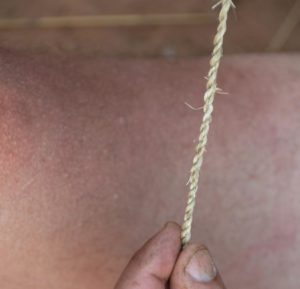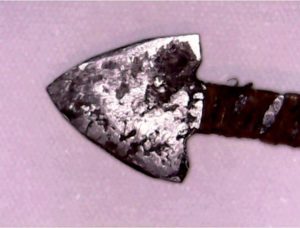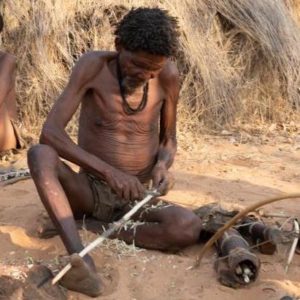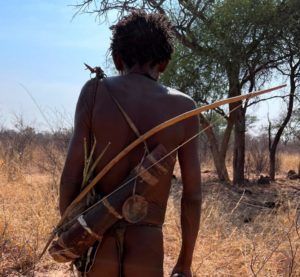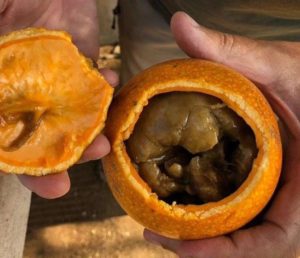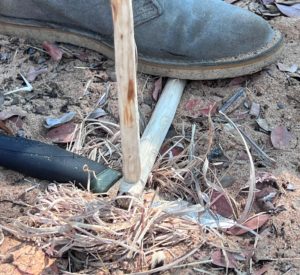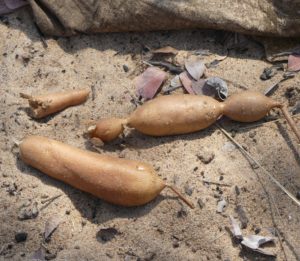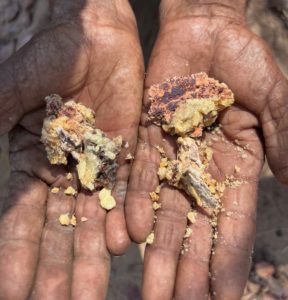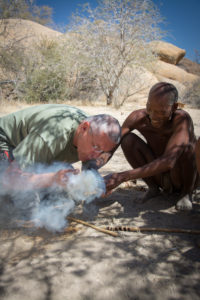Khoi-San
Making bow strings from plant fibers
The manufacture of bow strings from plant materials is a skill that Bushmen have practiced for a relatively short period. Around 1900, they learned from neighboring Bantu-speaking tribes how to use Sansevieria fibers to create bow strings. Before this, they…
Composition of Bushmen Arrows
The topic of the composition of Khoi-san (Bushmen) arrows for hunting is vast and intricate. Numerous anthropological studies have documented the unique designs utilized by nearly every family group of Khoi-san in Southern Africa. These designs are often a result…
Making bushmen bows for hunting
Generally speaking, the Khoi-san (‘Bushmen’) employ bows and poisoned arrows for “tracking and stalking” during hunting in Northern Namibia and North-Western Botswana. The various Khoi-san tribes utilize different materials and techniques for crafting these weapons. However, in this article, we…
Bushmen hunting techniques in Namibia
In earlier times, the Ju//hoansi Khoi-san (Bushmen) of North-East Namibia employed four distinct traditional techniques for hunting animals. These techniques have remained unchanged, as even today (in 2023), the Ju//hoansi continue to eschew the use of firearms, sticking to their…
Monkey orange, an eagerly sought-after fruit
Monkey orange is the collective common name for the fruit of at least five different Strychnos tree species, which occur from Durban/South Africa up to Western Tigray in Ethiopia. These fruits are highly delicious, and all parts of the trees…
Manketti wood for friction fire lighting
In the northeastern parts of Namibia, Ju//hoansi Khoi-san bushmen preferably use Manketti wood (Schinziophyton rautanenii) for friction fire lighting, at least in areas where Manketti trees are growing. Such areas have slightly higher elevations compared to savanna bushveld vegetation. Both…
‘Bush potatoes’ from Cowpea plants in Namibia
Cowpeas (Vigna lobatifolia) are strong climbers that resemble Mung beans. The stem of this vine is up to 6 m long and develops trifoliate leaves. Its flowers resemble purplish pea-flowers, and the pods are about. 7 – 9 cm (2…
Manketti (or: Mongongo) nuts
Manketti nuts are a staple food for a variety of people within its distribution range. And there is a strict division of naming them. Khoi-san people (Bushmen) call them ‘Manketti’, whereas Kavango people (Bantus) call them ‘Mongongo’. Both names denominate…
Wild Syringa (Burkea africana) edible tree resin
Many African trees extrude edible gums and resin. Notable Vachellia ssp. and Senegalia ssp. (old name: Acacias) are known for their edible gums. Khoi-sani people collect and eat whatever edible gums and resins they find on the go. In our…
Leaf huts as temporary shelters for shade
Members of the Khoi-san (Bushmen) tribe named Ju//hoansi are also called !Kung. Both the signs / and ! denote click sounds. The tribe is about 30,000 people spread over Namibia, Botswana, and southern Angola, with a central area at the…
Creating fire by hand drill in Namibia
The type of wood for fire hand drills changed over time Fire starting with friction hand drills was traditionally common among Khoi-san (Ju//hoansi) people in their distribution area, which was once over Southern Africa and became increasingly confined by invading…

